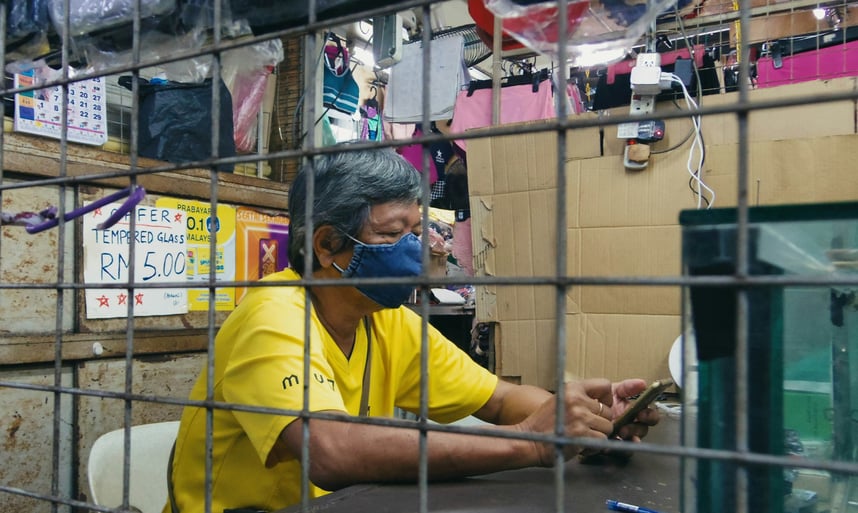Tax Breaks, Chip Plants and EV Credits Spark a U.S. Manufacturing Revival
JOB MARKET


From Peak Employment to Rust Belt Ruins
In 1979 America counted more than 19 million factory workers, a historic peak that anchored middle‑class prosperity from Detroit to Davenport. Four decades later only 12.5 million manufacturing jobs remained—an almost 36 % contraction that hollowed out industrial towns and earned swaths of the Midwest the nickname “Rust Belt.” Economists trace the slide to three converging forces. First came globalization, which accelerated after Cold‑War trade barriers fell and the World Trade Organization formalized a rules‑based system in the mid‑1990s. Multinational firms shifted production where wages were a tenth of U.S. rates, shaving costs but exporting payrolls.
Second, automation stripped labor content from every product. Robotics and advanced machine‑tooling doubled factory throughput with half the headcount; industrial engineers who once supervised ten machinists now manage automated cells from control rooms. Finally, outsourcing completed the trilogy. Contract manufacturers in East Asia assumed everything from circuit‑board assembly to final packaging, transforming U.S. brand owners into logistics coordinators. The result was a supply chain optimized for cost but prone to geopolitical shocks, as COVID‑era shortages and shipping snarls later revealed.
The social aftershocks were equally pronounced. Median household income in counties heavily dependent on manufacturing fell relative to service‑oriented regions, and tax bases shrank. Town councils deferred infrastructure maintenance, small‑business corridors emptied, and local schools struggled to fund technical programs. By the early 2000s, political candidates across parties pledged to “bring jobs back,” yet the trade deficit in goods widened year after year—driven largely by imports from China.
China’s Ascent and the Widening Trade Gap
When China joined the WTO in 2001, its share of U.S. goods imports was barely six percent. Two decades later it stands near 17 %, equivalent to hundreds of billions of dollars in annual shipments ranging from smartphones to apparel. Early investors, lured by labor rates as low as two dollars an hour and a massive domestic market, seeded entire manufacturing ecosystems. Automotive giants Volkswagen and General Motors built joint‑venture plants, exporting tooling know‑how in exchange for market access. Electronics assemblers clustered along the Pearl River Delta, scaling output at speeds Western plants could not match.
China’s industrial policy added fuel. State investment funds showered strategic sectors—including batteries, solar panels and rail transport—with low‑interest loans and land grants. Local governments created export tax rebates and subsidized port fees. Over time, Chinese firms transitioned from contract work to proprietary product lines. BYD leveraged handset battery expertise to build electric cars; Huawei parlayed telecom equipment dominance into EV powertrains. Foreign licensors discovered that erstwhile junior partners had become head‑to‑head competitors on cost, scale and increasingly on technology.
For the United States the implications were stark. The bilateral trade deficit in goods ballooned from $83 billion in 2001 to more than $382 billion in 2023, and every incremental container ship of cheaply priced imports added pressure to domestic payrolls. University studies estimated that Chinese import competition alone displaced up to two million U.S. manufacturing jobs between 1990 and 2015. As consumers enjoyed low prices on televisions and power tools, dislocated workers contended with retraining challenges and wage losses that persisted for years.
Reshoring Playbook: Tax Credits, Subsidies and Strategic Selectivity
Washington’s policy response has leaned on a powerful mix of fiscal incentives and direct subsidies aimed at high‑value sectors—startling in scale and bipartisan in support. The Inflation Reduction Act (IRA), signed in 2022, earmarked $369 billion for clean‑energy manufacturing and electric‑vehicle adoption. Central to the plan are tax credits worth up to $7,500 per new battery‑electric car assembled in North America using domestically sourced critical minerals. A separate $4,000 credit targets the nascent used‑EV market, sweetening residual values and widening the buyer pool. Automakers responded by rushing battery plants to states such as Georgia, Tennessee and Michigan; private announcements since passage total more than $45 billion in EV‑supply‑chain projects. Construction cranes now punctuate rural farmland where cathode‑active‑material facilities rise next to gigawatt‑scale solar factories.
Semiconductors—arguably the Achilles’ heel revealed when pandemic shortages idled auto lines—sit at the heart of the CHIPS and Science Act. The law earmarks $50 billion in direct incentives and research grants, plus an investment tax credit covering 25 % of fab capital expenditures. The Semiconductor Industry Association calculates that promised private outlays already exceed $210 billion across 22 states. Taiwan Semiconductor Manufacturing Co., the world’s contract‑chip colossus, has committed $100 billion for up to five advanced facilities in Arizona over the coming decade, a scale unseen on U.S. soil since the 1990s. Intel, Samsung and Micron follow with multibillion‑dollar campuses stretching from Ohio to Texas and Idaho.
State governments amplify federal carrots with property‑tax abatements, workforce‑training grants and expedited permitting. Local colleges design two‑year nanofabrication curricula, while unions negotiate project‑labor agreements that guarantee prevailing wages on mega‑fab construction—injecting fresh blue‑collar paychecks into regions long starved of industrial growth. Early payroll data show manufacturing payrolls expanding at an annualized pace of three‑percent since mid‑2023, roughly double the pre‑IRA trend.
Can Labor and Logistics Keep Pace?
Even as groundbreaking ceremonies proliferate, companies face a looming skills gap. Consulting firm Deloitte projects that by 2030 the U.S. could encounter 2.1 million unfilled manufacturing roles, particularly in mechatronics, industrial maintenance and semiconductor tool operation. Baby‑boomer retirements compound the shortage: fully one‑third of incumbent factory technicians exceed 55 years of age.
Corporate training budgets and community‑college partnerships aim to close the gap, but ramping a leading‑edge chip fab takes years and a talent pipeline versed in chemistry, photolithography and vacuum‑physics maintenance. TSMC’s Arizona plant, for instance, plans to rotate hundreds of new hires through six‑month apprenticeships in Taiwan to master process recipes. Critics warn that without immigration reform to ease visa caps for degreed engineers, the labor bottleneck may delay volume production and soften the economic payoff.
Supply‑chain resilience poses another challenge. Battery‑grade lithium, nickel and cobalt remain heavily concentrated in Australia, Indonesia and the Democratic Republic of Congo. Federal guidance allows EV credits only if material sourcing avoids “foreign entities of concern,” a clause aimed at China. Auto OEMs have scrambling to secure offtake agreements with South American brine operators and to invest in Nevada and Arkansas mineral projects. Logistics planners likewise redesign shipping lanes: instead of trans‑Pacific inbound containers, new corridors move Canadian graphite and Mexican copper northward for onshore cathode plants. The revamped network promises shorter lead times but demands billions in rail and port upgrades.
Finally, the reshoring wave collides with automation’s onward march. Advanced fabs and EV plants rely on autonomous material‑handling robots, AI‑driven quality inspection and predictive‑maintenance analytics that together curb labor intensity. The net jobs tally depends not just on site count but on headcount per unit of output. Federal officials emphasize quality of work—high wage, technical skill, union representation—over sheer quantity, arguing that value‑added payrolls generate larger multiplier effects in local economies. Early evidence from battery‑plant host counties shows average hourly earnings near $32, well above the national manufacturing average.
Outlook: A Reluctant but Real Reindustrialization
Whether the current momentum can reverse 40 years of attrition remains in play. Reshoring to date clusters around strategic nodes—semiconductors, EVs, renewable components—rather than mass‑market apparel or consumer electronics. Yet those nodes carry extensive supply ecosystems: an advanced logic fab can trigger 30,000 indirect jobs in chemicals, gases and equipment. Policymakers hope network effects will seed a virtuous cycle of supplier co‑location, logistics investment and STEM‑oriented education reform.
Companies, for their part, weigh geopolitical risk alongside cost. Rising wages in coastal China, tariff uncertainty and national‑security scrutiny of sensitive technologies elevate the appeal of U.S. plants, even at capex premiums. Add generous tax credits that effectively cut after‑tax project costs by 30 % or more, and boardrooms find the math compelling. The verdict will hinge on execution—both in bridging the labor shortfall and in sustaining bipartisan backing through election cycles.
For now, crane counts and groundbreaking ceremonies suggest a genuine if selective comeback. Towns once anchored by shuttered steel mills now anticipate chip‑packaging lines; counties bruised by textile decline map training centers for lithium‑ion assembly. The global economy’s pendulum rarely swings back to its start, but America’s push to reclaim manufacturing heft no longer reads like nostalgia. It is a realignment underwritten by the tax code, accelerated by geopolitical rivalry, and measured in the hum of robots welding battery trays on U.S. soil.
